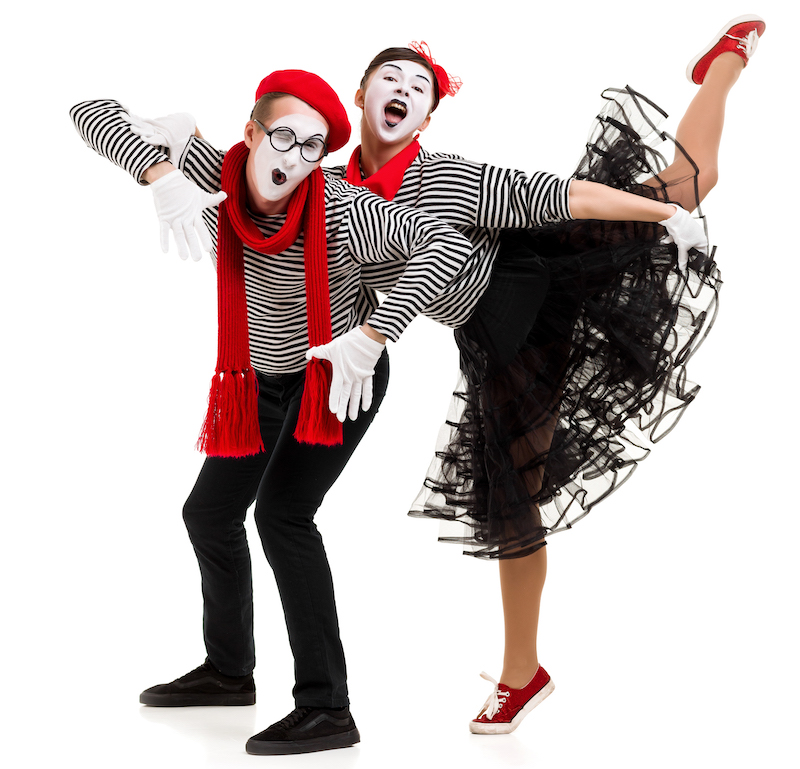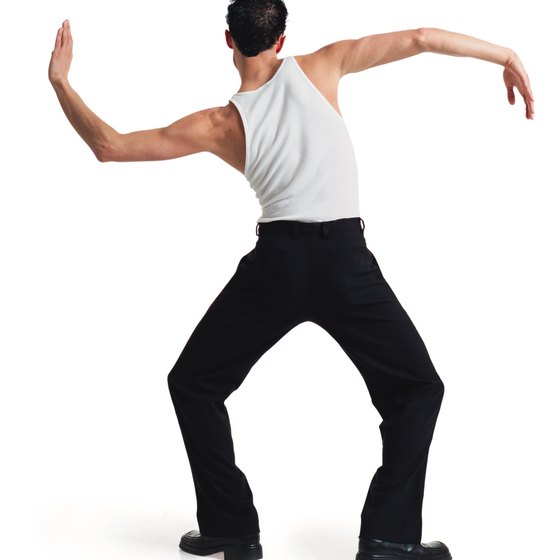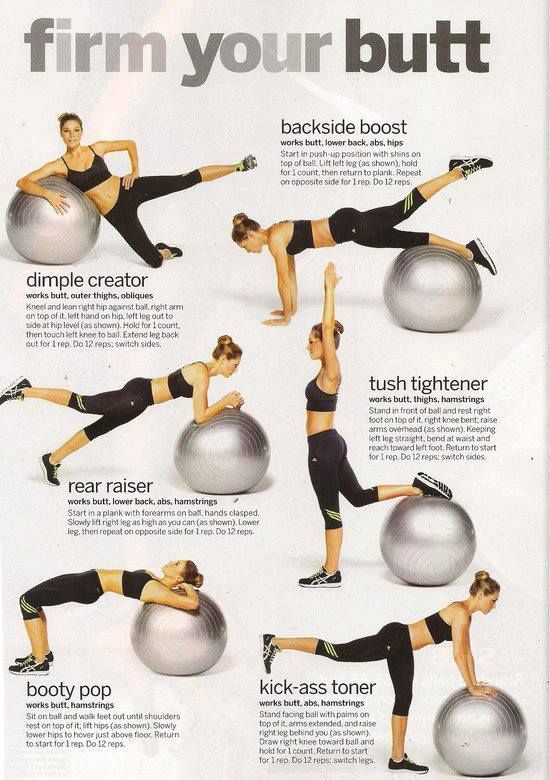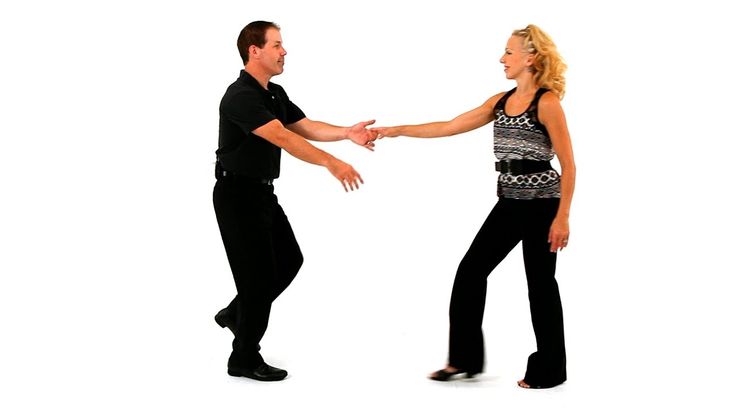How to learn kizomba dance
How to dance Kizomba | iASO Records
Kizomba is originally from Angola. As with other Latin social dances, Kizomba combines elements of European ballroom dance with African dance movement and timing.
Kizomba Timing:
Kizomba is in 4/4 time - which means that there are four beats to every measure. The larger cycle in the music revolves around 4 measure cycles - ie: each measure has four beats, so when 4 of these measures pass, 16 beats will have passed.
Basic Steps:
In Kizomba, there are several basic steps - each with its own timing. In addition, in Kizomba there are a variety of dance moves that bring the dancers temporarily away from the basic step patterns. Part of the challenge of dancing Kizomba is for leader and follower to remain synchronized in their steps.
Basic Step Variation A
The most basic step in Kizomba is a side to side two step. It starts for the leader on the left foot and for the follower on the right. The leader steps to the side with the left foot, then brings the right foot together with the left in a tap (do not leave your weight on the right foot). Then the leader steps to the right with the right foot and brings the left foot together with the right for a tap step. The pattern then repeats. Each pattern takes one measure to complete - with a step or tap on each beat. The follower mirrors the leader with the opposite foot.
Basic Step Variation B
Variation B illustrates just how complicated Kizomba's basic step patterns are in comparison to other social dances. On the surface, the step is fairly simple: The leader begins by stepping forward with the left foot, then steps with full weight on the right foot (either forward or in place), and finally taps with the left foot without leaving any weight on it. Now for the second half of the step, the leader steps again with the left foot, but this time backwards, steps back with the right foot, and taps back with the left - repeating the initial forward pattern but this time back in the opposite direction.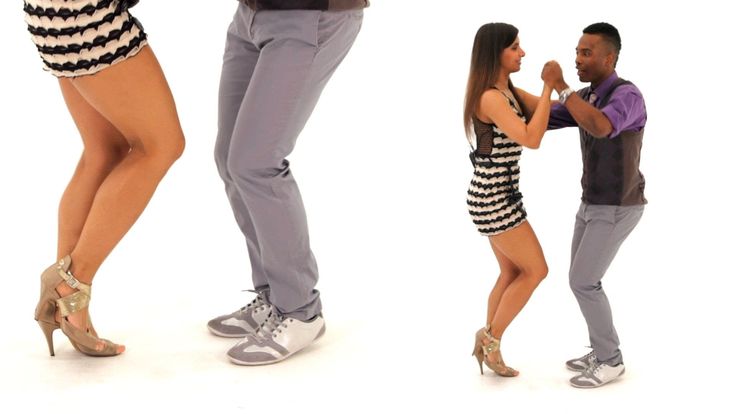 So the pattern consists of three steps in each direction. Each group of three steps begins with the same foot - for the leader the left foot. The follower mirrors with the opposite foot, and so always begins with the right foot. Each step and tap falls evenly on a beat, so the entire forward and back pattern (which consists of 6 steps) takes 6 beats. Here is where things get tricky. Kizomba has 4 beats to a measure, so the 6 beats do not complete 2 measures. If you begin this step pattern on beat 1, you will end it on beat 6 rather than beat 8. When you step again after completing a cycle of the pattern, you will be stepping on 7 rather than 1. The entire forward and back 6 step pattern must be repeated 4 times before it finally ends on 8. This complexity means that dancers must be particularly aware of their timing, or risk getting lost. When embarking on Basic Step Variation B, dancers must repeat the forward and back pattern 4 times before changing to a different step. Alternatively, dancers can use more complex footwork - cha cha steps etc - to transition to another pattern midway through a cycle.
So the pattern consists of three steps in each direction. Each group of three steps begins with the same foot - for the leader the left foot. The follower mirrors with the opposite foot, and so always begins with the right foot. Each step and tap falls evenly on a beat, so the entire forward and back pattern (which consists of 6 steps) takes 6 beats. Here is where things get tricky. Kizomba has 4 beats to a measure, so the 6 beats do not complete 2 measures. If you begin this step pattern on beat 1, you will end it on beat 6 rather than beat 8. When you step again after completing a cycle of the pattern, you will be stepping on 7 rather than 1. The entire forward and back 6 step pattern must be repeated 4 times before it finally ends on 8. This complexity means that dancers must be particularly aware of their timing, or risk getting lost. When embarking on Basic Step Variation B, dancers must repeat the forward and back pattern 4 times before changing to a different step. Alternatively, dancers can use more complex footwork - cha cha steps etc - to transition to another pattern midway through a cycle.
Basic Step Variation C
This pattern is similar to B, but adds a syncopated (cha-cha) step between the 3rd & 4th, and 6th & 1st steps of each pattern. So the leader steps forward with the left foot on 1, steps with the right foot on 2, steps with the left foot on 3 (this time with full weight), steps with the right foot quickly on 3-and (the beat midway between 3 and 4), and then steps back with the left foot on 4, steps with the right foot on 5, and then steps with the left foot (full weight) on 6, with the right on 6-and, finally with the left forward on 7 - which begins the next repetition of the pattern. The follower mirrors with the opposite footwork.
Basic Step Variation D
This step is the most simple of all, but is usually used within more complicated patterns rather than on its own. It's a simple left, right, left right - just as in merengue. So the leader steps with the left foot on 1, with the right foot on 2, with the left foot on 3, with the right foot on 4, etc. The follower mirrors. This step can be combined with variation B or C so that the dancers can exit from variation B or C without completing a full 4 cycles.
The follower mirrors. This step can be combined with variation B or C so that the dancers can exit from variation B or C without completing a full 4 cycles.
These basic steps of Kizomba and are used as building blocks to construct complex patterns. The variety of basic steps and free-style of the more complex patterns make Kizomba a difficult dance to understand and follow. The videos on this page give examples of authentic Kizomba dance. The first video gives instructions for how to dance Kizomba in Portuguese. The other videos are of breathtaking Cape Verdean and Angolan dancers.
Kizomba and Semba Dance Classes in Orlando
WELCOME TO SEMIL KIZOMBA DANCE STUDIO
We Provide Kizomba and Semba Dance Lessons in Orlando
Classes That Focus on Technique
Our classes focus on technique, foundations, quality of movement and connection.
No Partner Required
No partner is required to join our group dance classes in Orlando and Kissimmee.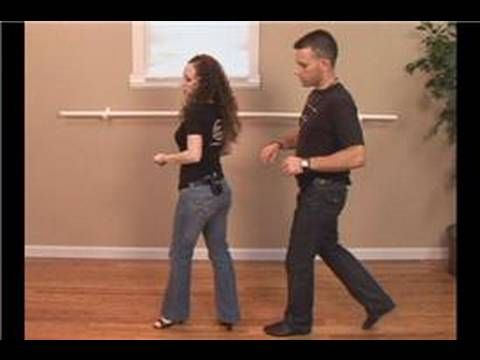 We constantly rotate partners so you'll have someone to dance with.
We constantly rotate partners so you'll have someone to dance with.
Local Group Outings and House Parties
We get to know each other by going to local group outings as well as having house parties.
All Levels and Backgrounds Welcome
We welcome everyone regardless of background or current level of dance.
WHY YOU SHOULD DANCE KIZOMBA
- You'll be able to boost your confidence and coordination by learning something new
- You'll make plenty of new friends in the dance scene
- You'll learn a new skill you can take with you anywhere in the world.
- It's a very good way to develop body awareness and connection to your partner.
Abraco is Finally Here!!
Join us November 18th-20th as we have the second edition of our Kizomba and Semba Weekender. We'll have workshops in Kizomba, Semba, Tarraxinha and Konpa.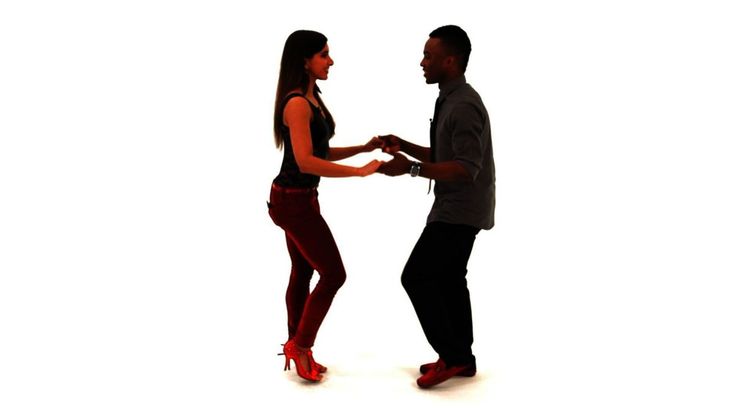 Get your tickets now before the price increases!! Use code "skdstudent" to save!!
Get your tickets now before the price increases!! Use code "skdstudent" to save!!
Register
Our Orlando Classes
Every Wednesday!!
Join us at Danzforce Extreme for our weekly Wednesday classes in Kizomba and Semba. No partner required and first class is free for first time student!!!
Register
Private Lessons Also Available
Not comfortable with group classes? Or maybe you have a busy schedule? Private lessons are the way to go. You'll get better quicker and at the same time you'll be able to take the private lessons on your schedule. We offer private lessons in Kizomba, Semba, Konpa and Tarraxinha. Message us to schedule your private lesson today!!
Message Us
Our Youtube Videos
Semba with Semil and Chloe
Short Semba demo at Lake Monroe Park in Deltona, Florida
Dancing Kizomba in Cambridge
Short clip of Kizomba dancing in Cambridge.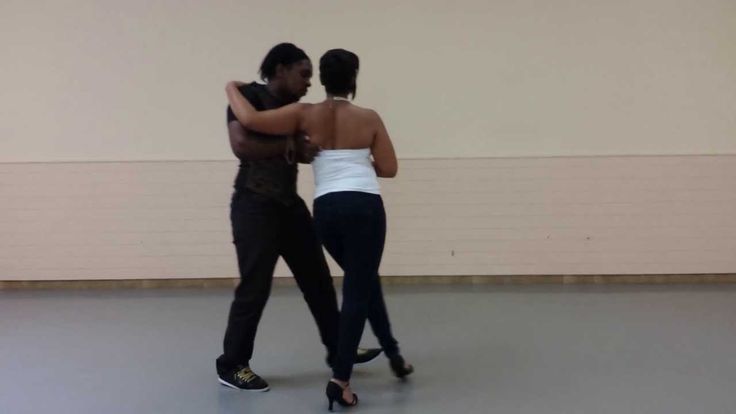
Music That We Like
We listen to and play a variety of music in class. This includes but is not limited to Kizomba, Semba, Guetto Zouk, Zouk, Tarraxinha, Coladeira, Konpa and more. Example of music we play in class:
Soundcloud Page
Monthly Newsletter Sign Up
Interested in exclusive discounts and our upcoming events? Join our email list and stay up to date with our monthly newsletter.
basic moves for beginners with video
Contents
This is not just a dance direction, it is a whole subculture: stormy, but at the same time very romantic. A gentle African dance is performed exclusively in pairs. Looking at people dancing kizomba, one might get the impression that they are in love - it looks so soft and sincere. Want to move like the couples in the video tutorials? The team of the Laboca dance club will be happy to teach you!
Kizomba rules
The accompaniment of kizomba gained modern sounding due to electronic instruments. They also allow you to create the desired rhythm with a size of four by four measures. This style starts a new theme song every sixteen beats.
They also allow you to create the desired rhythm with a size of four by four measures. This style starts a new theme song every sixteen beats.
The movements of kizomba are very similar to bachata: they are also simple and uncomplicated. You can recognize kizomba by its smoother elements, the placement of accents with the hips, the very strong hugs of partners, the sedentary body and the synchronism of the performers in a pair. Leading, unlike Latin American dances, is carried out from the chest. Kizomba steps are done on soft, slightly bent knees. The head is kept straight all the time and does not "jump".
In couples, as in bachata, the man leads, the woman simply follows the direction given by him and decorates the dance with elements of improvisation. The partners are as close as possible to each other, the man gently grabs the woman's back, and her left hand lies on his neck.
A distinctive feature of kizomba is the so-called Tarraschinha - the ability to dance with almost no noticeable movements. These are the waves, the swaying of the pelvis, the barely noticeable curves of the body, which make kizomba so seductive.
These are the waves, the swaying of the pelvis, the barely noticeable curves of the body, which make kizomba so seductive.
Sign up for a trial lesson
Kizomba basic movements
It is important to realize that kizomba is an African dance that came to us from the rituals of wild tribes. It is believed that it began to spread across European dance floors quite by accident. And even though the direction has already acquired modern features, the main movements in kizomba have not changed: the performers must catch the rhythm of the music with their bodies and embody it in their movements and vibrations.
At the kizomba class you will not learn complex elements and intricate figures, but master the basic steps, get acquainted with tarraschinya and begin to dance calmly and smoothly.
It is important to improve the plasticity of the body, learn how to effectively rotate the hips and move gently, but rhythmically.

The basic steps of kizomba look like stepping over with the transfer of body weight from one side to the other. The man starts on the left foot, the woman on the right. Try to cross in one place first.
The next movement is in a circle. The man takes a side step to the left side, leaving the weight on the left leg. The partner puts his right leg aside and then takes a side step, again without transferring body weight. The woman mirrors his exercises. Try practicing this movement as you move around the room.
Another basic movement: the partner takes a step forward with the left foot, then with the right foot and puts the left foot forward without transferring body weight to it. Then - again a step with the left, but already back. The woman duplicates the man's movement using opposite legs.
Having mastered the three basic movements, you are already dancing kizomba! And for spectacular tarraschinya and the ability to freely improvise, come to the Laboca dance club!
Kizomba dance video
How to dance kizomba, how to learn to dance kizomba?
- home
- Kizomba
- How to dance kizomba
Learn to dance kizomba? The answer to this question is in the words "want" and "feel". Of course, like all dances, kizomba must be started with basic steps. You can learn how to dance them from video lessons, but it’s better to visit kizomba lessons for beginners. A few basic "pas" is the minimum basis that is necessary in order to start making the first confident movements in kizomba. Their correct name, of course, comes from Spanish and Portuguese, but we will try to explain them to you in Russian as well, so don't worry about the language difference.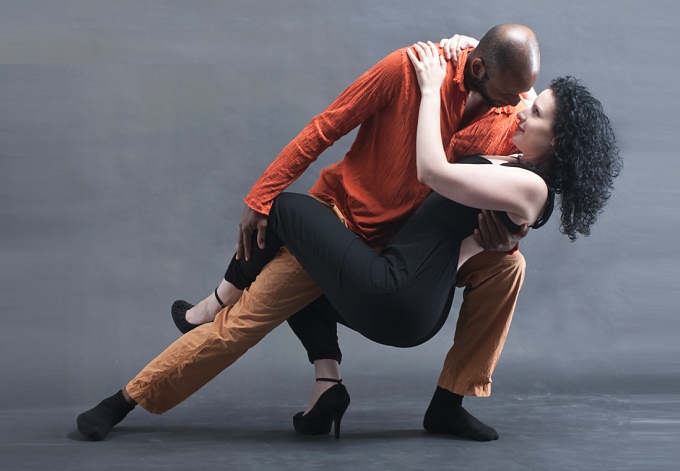
Our trainers are excellent professionals who have been teaching this trendy dance direction for many years. Be sure that when you come to us for training, you will learn from professionals!
How to dance kizomba ? The first thing to remember is that kizomba is only danced in pairs. Therefore, the main skills that you should learn during our lessons is a sense of rhythm and interaction (following and leading in pairs).
Kizomba is one of the simplest dances, its distinctive feature is the absence of heavy figures, high-speed dance movements. Often the partner duplicates and “mirrors” the movements of the partner, so that the couple looks harmonious and harmonious. The smooth movements and flexible lines of the hands of both dancers add sensuality and sexuality to the dance.
How can I dance kizomba if I have never danced before? It's not a problem at all. In order to learn how to dance, there is no need to have serious dance training, in the social version of kizomba, and this is exactly the dance we teach in our schools (that is, partners change during the dance, and do not form stable pairs), no one performs serious lifts, rolls, does not throw partners in the air or does not make serious backbends.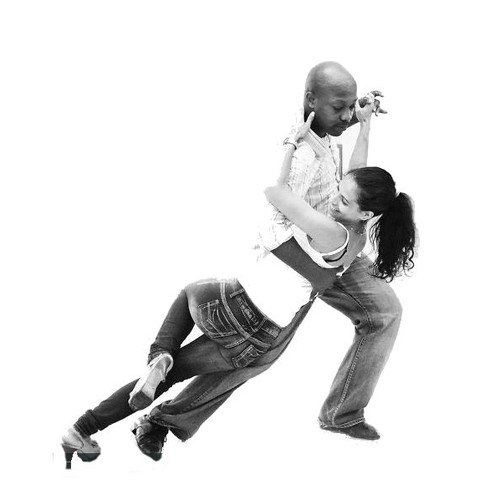 These are very simple “pas” and basic steps. The only moment of difficulty is only the technique of steps in pairs.
These are very simple “pas” and basic steps. The only moment of difficulty is only the technique of steps in pairs.
This dance is very easy to learn. In kizomba, you just walk around. As you walk at home, to the store, slowly and lazily. The slow rhythm makes it easy to learn and easy!
How to learn to dance Kizomba can be told by our experienced trainer and video lessons that you can find on our website. However, we argue that without the atmosphere of the lesson, without group classes, without a sense of the audience, you will not be able to fully enjoy the dance, relax and make this dance really beautiful!
The most important thing in kizomba is feeling and sensitivity. And this, you will agree, is the scourge of all modern girls in Russia. We are much more reserved than our African and Latin counterparts. Kizomba mixes romantic and fiery rhythms. If you really can't sit still, barely hearing this music, we invite you to come to our trainings to get a base of options on how you can move beautifully. Our trainers will offer beginners the basic steps, and then show the simplest connections and combinations of movements, lead them all the way to the level of a high-class dancer, help open your soul and make the dance sexy. We will teach plasticity, grace and stretching, your figure will acquire the desired shape, and movements will become unprecedentedly light.
Our trainers will offer beginners the basic steps, and then show the simplest connections and combinations of movements, lead them all the way to the level of a high-class dancer, help open your soul and make the dance sexy. We will teach plasticity, grace and stretching, your figure will acquire the desired shape, and movements will become unprecedentedly light.
How to learn to dance kizomba? The answer is simple - you need to want to dance it. Let go and step over all your complexes and omissions, feel yourself, your body, music and partner!
SIGN UP FOR A FREE LESSON
First lesson - FREE
Monthly subscription not linked
Student reviews
Reviews from the site Yandex maps
About the homely atmosphere at the dance school and the cheerful teachers.



